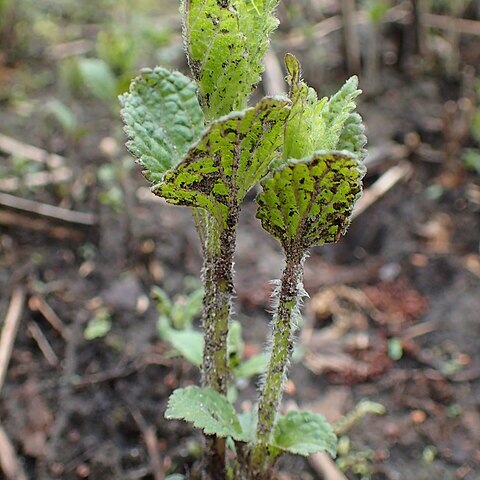Herbs perennial. Stems erect, 40-150 cm tall, base woody, subglabrous, apex pubescent, glandular, much branched. Petioles 1-3.5 cm, pubescent; leaf blades ovate to broadly ovate, (4-)6.5-13 × (2.5-)3-7 cm, papery, pubescent or puberulent, glandular, adaxially dark green, abaxially greenish, base broadly cuneate, abruptly attenuate, margin crenate-serrate, apex acuminate, apical tooth ovate to lanceolate; lateral veins 5-paired, elevated. Panicles loose, patent, terminal; cymes (3-)5-7-flowered, pedunculate, pubescent, glandular; floral leaves ovate, much shorter than cymes, except basal 1 or 2; bracteoles linear, ca. 1 mm. Calyx campanulate, 1.5-2 mm, bluish or densely appressed whitish pubescent outside; teeth triangular, 0.5-0.7 mm, apex acute, lower 2 slightly longer and wider; fruiting calyx tubular-campanulate, to 4 mm, conspicuously veined, slightly curved. Corolla purplish to blue, with dark spots on upper lip, ca. 5 mm. Stamens exserted. Style exserted. Nutlets brownish, triquetrous, ovoid, ca. 1.5 mm, glabrous except apex verruculose. Fl. Jul-Aug, fr. Sep-Oct.
More
A herb. It keeps growing from year to year. The stems are erect and 40-150 cm tall. The base is woody. The tips are branched and hairy. The leaves are broadly oval and 7-13 cm long by 3-7 cm wide. The flowers are in loose panicles at the end of the plant.

